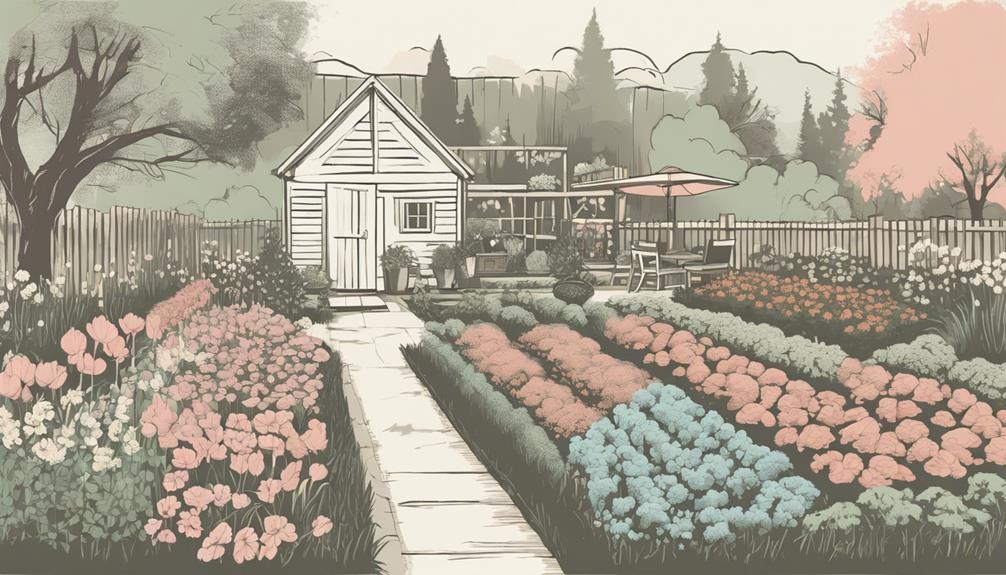How To Become More Self-Sufficient Without Starting a Full-Blown Farm…
Want to start preserving your harvest, making your own soap, or building a backyard root cellar — but not sure where to begin? “Homesteading Advice” gives you instant lifetime access to 35+ practical homesteading books on food preservation, veggie gardening, DIY natural cleaning products (save over $250 per year with this skill alone), brewing, off-grid energy, and a whole lot more…
Click Here To Check It Out Now!
“I’m planning to set up a backyard farm in my garden here in Melbourne, Australia. Given the varying climate conditions, I want to ensure my crops get the right amount of water. Could you offer some advice on how to plan for the irrigation in my layout?” Cheers, Emma, Melbourne, Australia.
How Should I Plan For Irrigation In My Layout?
Hey Emma! It’s wonderful to hear that you’re starting a backyard farm. Planning your irrigation properly is key to a thriving garden. Let’s get into the details on how to make sure your plants get the water they need.
Understanding Your Garden’s Needs
Every garden is unique, and the first step in planning your irrigation is understanding the specific needs of your plants. Consider the following aspects:
- Climate: Melbourne’s climate can be quite variable, so it’s essential to know your average rainfall and seasonal changes.
- Soil Type: Different soils have different water retention capabilities. For instance, sandy soil drains quickly, while clay retains water longer.
- Plant Types: Different plants have varying water requirements. Leafy greens usually need more water compared to root vegetables.
Choosing the Right Irrigation System
There are several types of irrigation systems, and the best one for your backyard farm depends on your specific needs. Here are a few options:
Drip Irrigation
Drip irrigation is highly efficient and perfect for water conservation. It delivers water directly to the roots, minimizing evaporation. Consider using this method for plants that need consistent moisture, like tomatoes and peppers. Here’s a simple setup:
- Lay out drip lines along rows of plants.
- Connect emitters to the lines at each plant base.
- Use a timer to regulate watering schedules.
Sprinkler Systems
Sprinklers are ideal for larger areas and lawns. They can cover a wide area but may lead to more water waste through evaporation. Use sprinklers for general garden beds and lawns.
Soaker Hoses
Soaker hoses are a good middle-ground option, providing a slow, steady stream of water directly to the soil. They are great for garden beds and save a lot of water compared to traditional sprinklers.
Setting Up Your Irrigation Zones
Differentiating your garden into irrigation zones will help in managing varying water needs. For instance:
- Zone 1: Drought-tolerant plants like herbs.
- Zone 2: Moderate-water-use plants like carrots and beans.
- Zone 3: High-water-use plants like lettuce and spinach.
Using this method, you can set specific watering schedules and amounts for each zone, ensuring every plant gets what it needs.
Automation and Smart Systems
To make your life easier—and ensure your plants are always well-watered—consider investing in an automated system. Here are some tips:
Timers
Simple timers can control when your irrigation system turns on and off. Set them to water early in the morning to reduce evaporation.
Smart Controllers
More advanced systems can connect to weather forecasts and soil moisture sensors, adjusting watering schedules automatically. These systems are great for keeping up with Melbourne’s unpredictable weather.
Rain Sensors
Prevent over-watering by installing rain sensors that can shut off your system during a rain event. It’s a simple addition that can save water and prevent root issues.
Water Conservation Techniques
Incorporating water-saving techniques into your irrigation plan is not only eco-friendly but also beneficial for your plants. Here are some suggestions:
Mulching
Mulch helps retain soil moisture, reduces evaporation, and can even suppress weeds. Use organic materials like straw, grass clippings, or wood chips.
Rainwater Harvesting
Collect rainwater using barrels or tanks and use it to water your garden. It’s an excellent way to make the most of natural resources.
Greywater Systems
Consider using greywater (wastewater from sinks, baths, and washing machines) for non-edible plants. Ensure it’s properly filtered and eco-friendly.
Maintenance and Troubleshooting
Regular maintenance ensures your irrigation system runs efficiently. Here’s a checklist:
- Check for leaks or blockages in your drip lines or hoses.
- Adjust sprinkler heads to avoid overspray.
- Clean out filters and nozzles to maintain water flow.
- Inspect timers and sensors to make sure they function correctly.
Occasional troubleshooting helps catch problems early. For example, if plants are wilting, ensure they’re getting enough water and check your irrigation schedule.
Practical Examples and Tips
Creating a visual map of your garden can be quite useful in planning your irrigation layout. Draw out your plant zones and mark where the lines, hoses, or sprinklers will go. Here’s a detailed example:
Emma can create a map of her backyard, marking where her lettuce, carrots, and herbs will be planted. She can then plan zones, placing soaker hoses in the beds with lettuce (Zone 3), drip irrigation for the carrots (Zone 2), and a sprinkler for the herb area (Zone 1).
Keep in mind that starting small and gradually expanding your system can help in managing costs and efforts. Also, monitoring weather patterns will help in making timely adjustments to your irrigation schedule.
Final Thoughts…
Emma, best of luck with your backyard farm in Melbourne! Remember, the key points are understanding your garden’s specific needs, choosing the right irrigation system, creating zones for effective watering, and considering automation and water conservation techniques. Thanks for reaching out, and happy gardening!

